The Tea Dragon Society
by Katie O'Neill
"Once upon a time, blacksmiths were as important as magicians. They made tools for healers to cure the sick. Swords for adventurers to battle monsters. Shoes to shod the hooves of working animals. The world was forged in iron, once upon a time."
Broad shouldered, horned and boasting many gold piercings, Greta's half-goblin mother is a blacksmith who knows the importance of passing on a trade. As her mother's apprentice, Greta shares her reverence for blacksmithing, but she also has the same gentle and sensitive nature as her bespectacled, merchant father. On her way home from a day working in her mother's shop, Greta finds two large, scary-looking dogs cornering a tiny, terrified animal. Realizing quickly that the only danger is in how hungry the poor dogs are, Greta gives them the meat she was bringing home for dinner ("Mama's gonna be mad about the meat, but that's ok. Nobody deserves to starve.") and then scoops up the frightened little creature.
At home, she gets a closer look at the animal. Seafoam green in color, it looks to be some sort of baby dragon... with leaves growing out of its horns. Greta's scholarly father knows exactly what the animal is and who it belongs to. He sends her off to return it.
A "little way out of town," Hesekiel runs a tea shop. Tall, slim and vaguely reminiscent of a sophisticated donkey, he is a Sylph who lives with his human partner, Erik. Hesekiel is delighted to have Greta reunite him with Jasmine and takes special notice of Greta's kind care of the creature and Jasmine's affinity for the human. Tea Dragons are mercurial, domesticated animals--one moment sweet and cuddly, the next angry and biting--who are particularly distrusting of strangers due to a long history of being targeted by thieves. A Tea Dragon spends its entire life with its owner, nosily picking up matters in the human's life, big or small, and hoarding them. The leaves that grow around their horns can be harvested and turned into highly desired tea, but raising a Tea Dragon (and its leaves) to maturity is a difficult and timely task. Of the many members who used to be part of a worldwide Tea Dragon appreciation and caregiving group called the Tea Dragon Society, Hesekiel and Erik are now the only two left. Like Greta's mother's blacksmithing, as the pace of life quickens, fewer and fewer people specialize in the more time-consuming trades.
In addition to several Tea Dragons, there is also an accidental apprentice in the home of Hesekiel and Erik: a primarily mute young goblin named Minette who has lost her memory. The only long-term memory she has is of being gifted with "future sight" and thus training to become a prophetess; she continues to have difficulty forming new memories. Because of this, she is nervous and embarrassed around people, preferring the company of the devoted (though labor-intensive) dragons.
Greta's interest in and commitment to the dragons (and to Minette, Hesekiel and Erik) pulls her into the cozy, slow-paced world of the Tea Dragon trade. In time, Minette opens up and grows to befriend Greta and the two young girls and the older male couple form a brand-new Tea Dragon Society.
After a few seasons of working with the Society, Hesekiel offers Greta the chance to try some of the tea. Tea Dragons tea has a special property that gives the drinker a sensory experience depicting much of the dragon's owner's life (all those tidbits the nosy dragon hoarded over the years). Shown through the use of wavy lines and rounded, atypically shaped panels, Greta's tea experience shows her the story of Hesekiel and Erik meeting and falling in love. She also learns through Jasmine's tea leaf recollections why Erik is in a wheelchair.
The pace of Katie O'Neill's (Princess Princess Ever After) world is reflected by the design of the graphic novel: all of the colors are gentle and fully saturated, the story development leisurely yet full of life. There are no enormous cliffhangers or heartrending love affairs, but every character, even the dragons, is such a fully realized individual that the reader wants to know more. The page's natural white space acts as the borders for each panel illustration, allowing for individual panels to spread out organically--many panels are rectangular, while some have undulating edges, some overlap other illustrations and some are not panels at all but simply a figure on white space. The magic of the world is in the forefront as the novel and color palette move from season to season, beginning and ending with spring. Greta's story is soft and sweet, a journey of growing love and friendships. And for readers who want more, "Extracts from the Tea Dragons Handbook" can be found in the back, explaining more about the creatures with illustrations of dragons (such as Hibiscus) not seen in the graphic novel. --Siân Gaetano



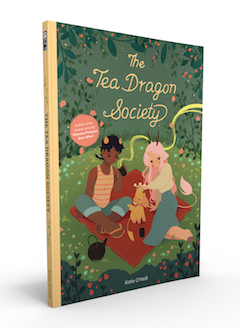
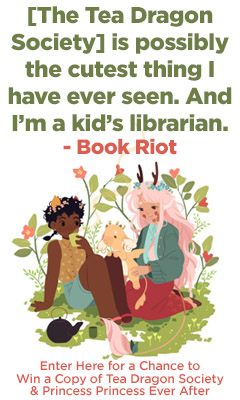
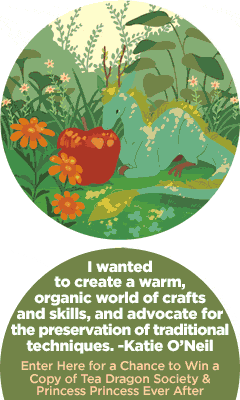

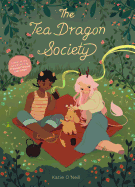

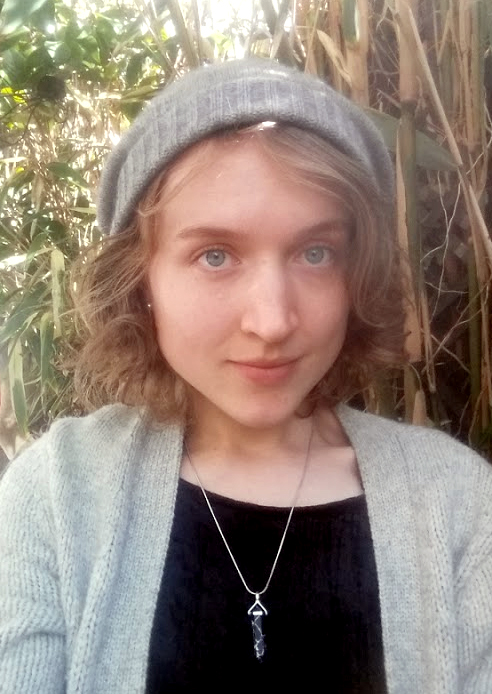 Katie O'Neill is an illustrator and graphic novelist from New Zealand, and the author of Princess Princess Ever After. The Tea Dragon Society (October 18, 2017) is her second graphic novel with Oni Press. She mostly makes gentle fantasy stories for younger readers and is very interested in tea, creatures, things that grow and the magic of everyday life.
Katie O'Neill is an illustrator and graphic novelist from New Zealand, and the author of Princess Princess Ever After. The Tea Dragon Society (October 18, 2017) is her second graphic novel with Oni Press. She mostly makes gentle fantasy stories for younger readers and is very interested in tea, creatures, things that grow and the magic of everyday life.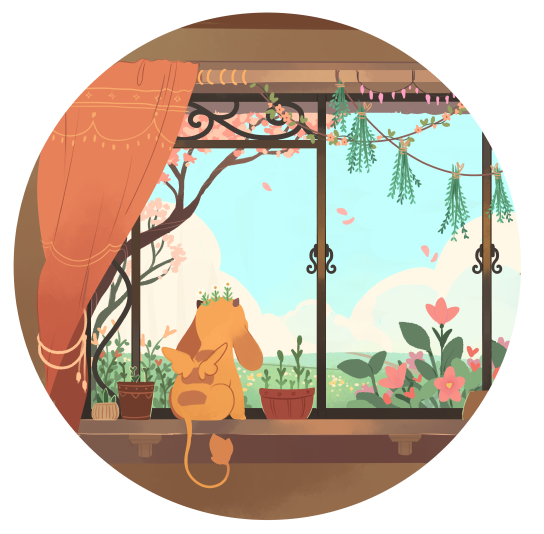 Will you continue producing webcomics now that you're twice published?
Will you continue producing webcomics now that you're twice published?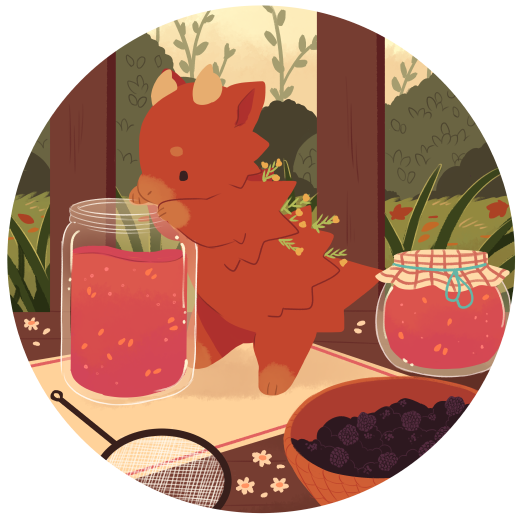 All tea dragons show you the experiences they've lived with their owners. They require 24/7 supervision, so they're with their person all the time, watching and being poky, nosy creatures in the lives of their owners. They absorb quite a lot of memories. When you brew the tea that a particular Tea Dragon produces, it will give you a sensory experience similar to smelling something familiar and being taken to a specific moment.
All tea dragons show you the experiences they've lived with their owners. They require 24/7 supervision, so they're with their person all the time, watching and being poky, nosy creatures in the lives of their owners. They absorb quite a lot of memories. When you brew the tea that a particular Tea Dragon produces, it will give you a sensory experience similar to smelling something familiar and being taken to a specific moment.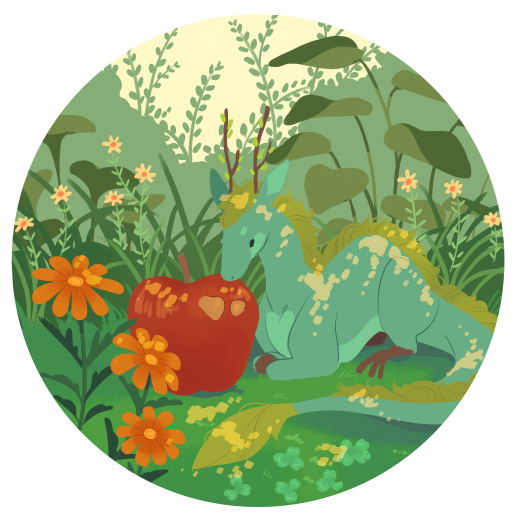 The world feels almost feudal with the trades and possible hierarchies. What drove you to create this world?
The world feels almost feudal with the trades and possible hierarchies. What drove you to create this world?